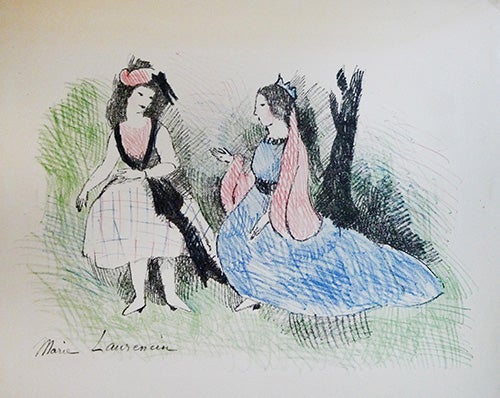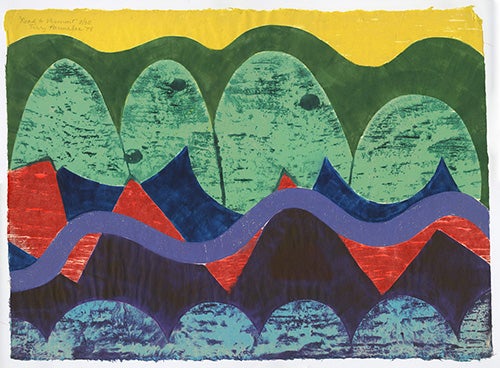October is American Archives Month. To celebrate, we asked Georgetown undergraduate student Sophie Bennett about her experience working at the Booth Family Center for Special Collections with the University Art Collection this summer.
October 21, 2020
What do you study, and what have you been working on at the Booth Family Center for Special Collections?
 I am a sophomore at Georgetown, studying art history and French. This summer, I researched women printmakers and identified keywords for works in the Booth Family Center for Special Collections by those women printmakers.
I am a sophomore at Georgetown, studying art history and French. This summer, I researched women printmakers and identified keywords for works in the Booth Family Center for Special Collections by those women printmakers.
What have you learned about special collections and archives during your time at Booth? What had been your exposure to special collections before you started working at Booth?
Before this opportunity, I had the chance to enjoy works from Georgetown’s special collections a few times as part of my art history courses. I suspect that being an art history student is advantageous in that regard; many people do not question the value of seeing a work of art in person. I would argue that viewing rare books or manuscripts actually has some of the same benefits as viewing an artwork in person. It isn’t just about being able to get a closer look—there’s also power in being in a space that’s designated for reflection. I think that enables a person to understand the gravity of an important document.
Having worked with Booth this summer, I’ve certainly gained an appreciation for its function as a space for people to learn in an intimate way. This appreciation grew as I learned about the breadth of the collection but it was also a result of our current circumstances, where museums and libraries are more inaccessible or closed altogether due to Covid restrictions.
Can you tell us about an especially interesting item that you've come across in the Art Collection? What did you do to find out more about it?
More than a single item, I was fascinated by the lives and shared experiences of some of the female printmakers in the collection. It was wonderful to see that Booth has accrued works from a range of female artists, some very well known and others barely recorded in history. Women printmakers at both ends of the spectrum worked hard to sustain their careers; and by virtue of their gender and the time in which they lived, female artists relied on the same kinds of paying jobs to keep their artistic careers afloat. Both Wanda Gág and Marie Laurencin, for example, illustrated children’s books. It’s made me think a lot about the subjects and media that women artists have turned to in history, and whether those patterns were a reflection of choice or of gender norms. It makes me especially appreciative of the fact that artists such as Gág and Laurencin are represented beyond those traditional roles in the collection and given the opportunity to be viewed as artists with a diverse skill set.

Marie Laurencin
Alice dans le Vallee
Lithograph, 1930
2013.22.5
Has your work with the Art Collection influenced your studies or your career objectives? If so, how?
I find myself thinking a lot more about what it means to have a functional collection. In art museums, a tiny fraction of the works in their possession are on view in a given month. I used to find this fact quite frustrating, but I’ve grown to see that a collection has to be quite diverse and expansive before you can start curating shows and engaging with the public. The smaller and more uniform the collection, the worse equipped the institution is to present relevant material to its audience. I’ve also learned how important it is to honor the works of an artist by researching their life; for one artist I researched, the only source I could find was from a family member a couple of generations down from her. If we had waited too long, the family lore would have become less reliable or even have disappeared. That ongoing commitment to learning more is how you give an artwork, and its creator, meaning and depth. Should I be so fortunate as to end up working in the art world, I hope to resist the temptation of a mainstream name, or simplified narrative of an artist’s life, in hopes of uncovering complicating but important biographical details or a new artist.
 Terry Parmelee
Terry Parmelee
Road to Vermont
Woodcut on paper, 1978
1998.15.5
What would you like other students to know about special collections?
Undergraduates use quiet spaces to study—as in, review. But quiet spaces can also be used to study—as in, analyze. I believe that learning is even more enriching when it is unhurried and unguided. The Booth Family Center for Special Collections is the perfect place for an unhurried and unguided experience, and I hope that more students use it for that purpose; that is, as a place to remember the joy of learning.
